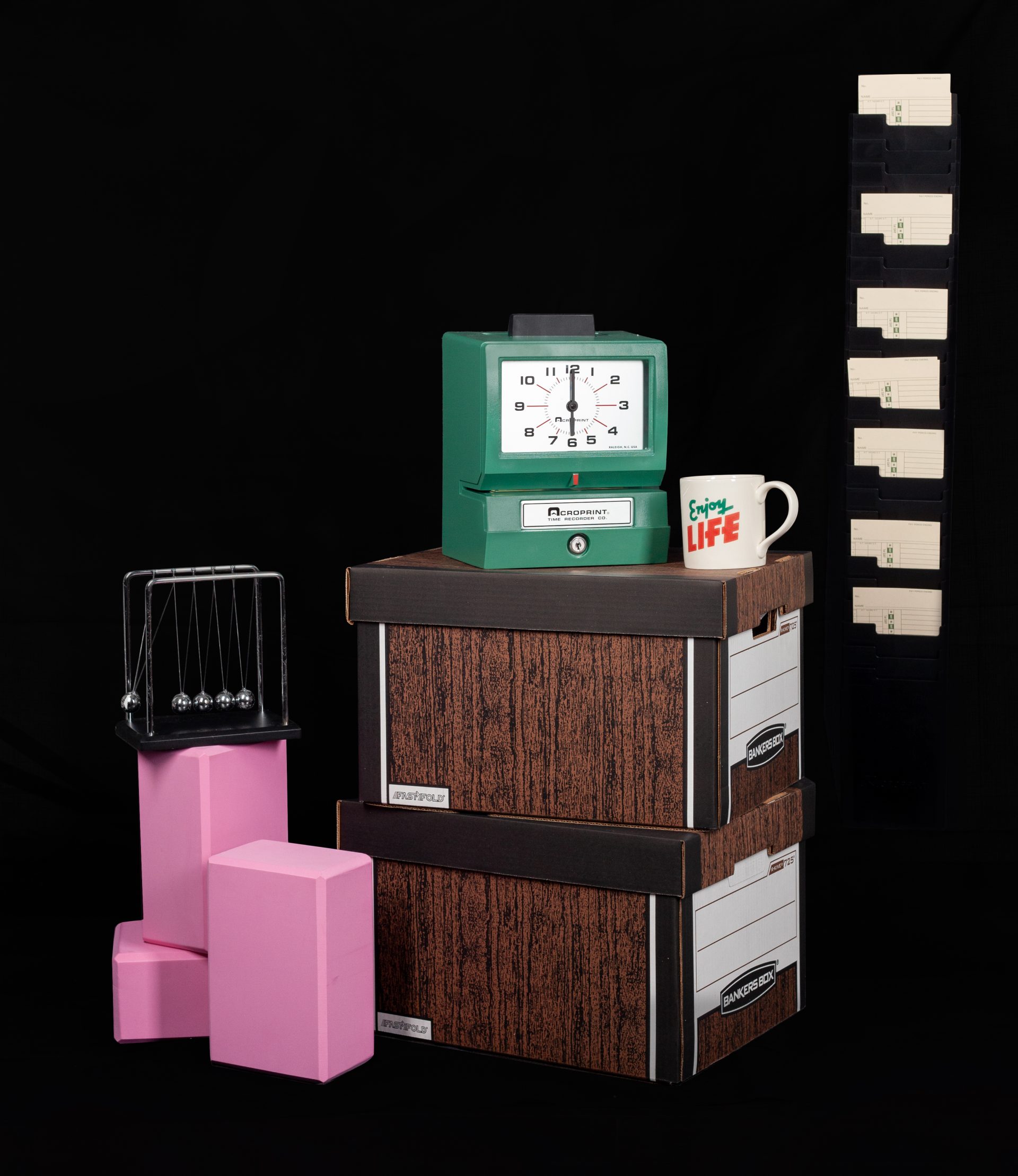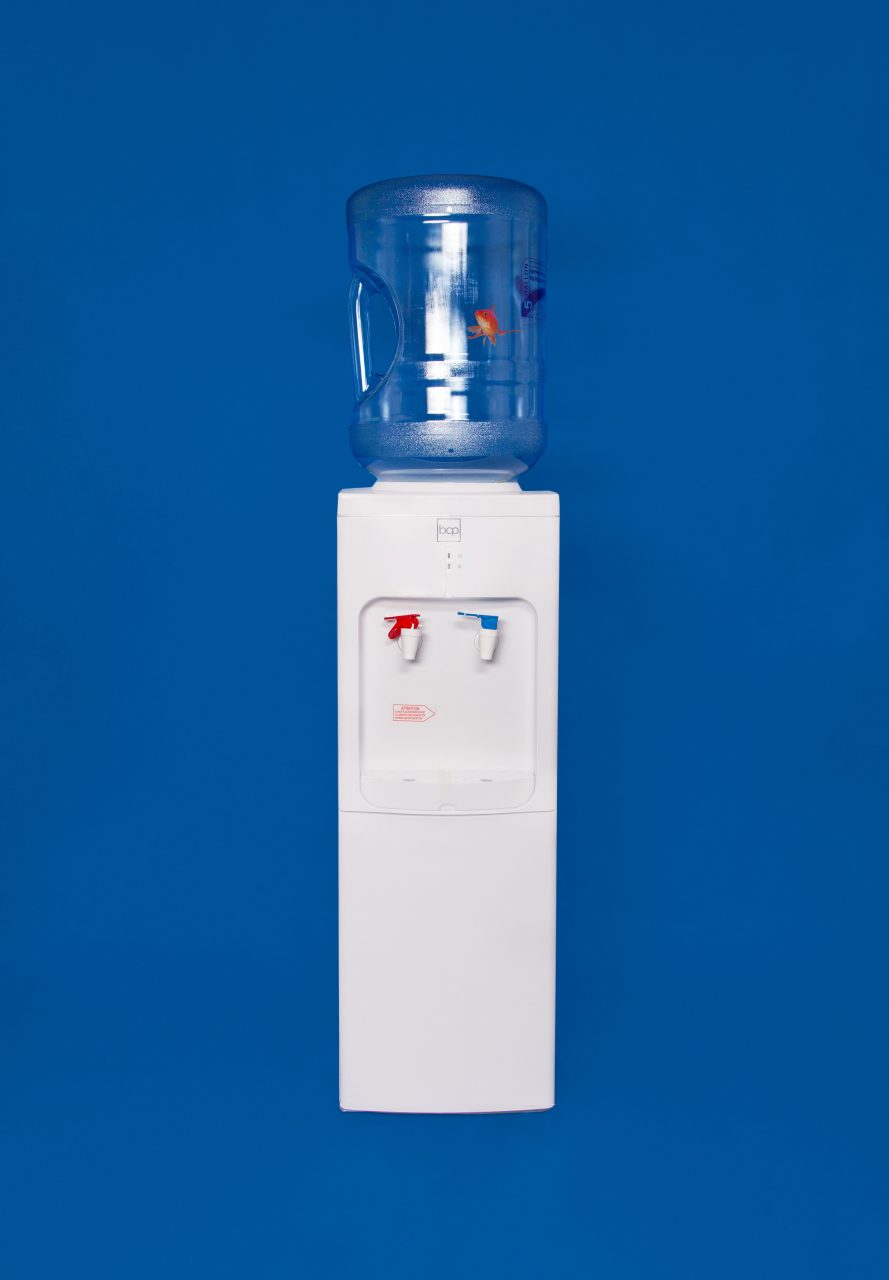Office design has become a hot topic in recent years. Innumerable reports condemn the failures of the ubiquitous open-plan workplace and highlight the advantages of adaptive spaces as alternatives. Domestic amenities and breakout rooms help ensure productivity and employee happiness, according to flexible workspace evangelists. A recent exhibition at Brooklyn design incubator A/D/O explored the historical complexity of office design to speculate how it might change in the near future. Curated by Lexi Tsien and Tal Liu of the design practice Soft-Firm and Andrea Hill of furniture producer TORTUGA Living, in collaboration with Alex Gilbert, Out Of Office tracked the evolution of the workplace since the 1950s, when companies embraced rigid hierarchies and analog innovations, and projected the future of workplaces into a time when firms will adopt lateral social structures and complete virtual reality integration.
Pairing a wall-size timeline with physical artifacts, Out Of Office suggested sprawling themes connecting design concepts and devices across decades. A classic balancing ball (the big blue sphere used as a chair by office workers craving an ab workout at their desks) sat near Edwin Moore’s push pin, patented in 1900; not far away was a 1984 Macintosh computer and an Apple Watch Series 1 from 2015.
The exhibition hinted at two possible futures for the office: totalizing physical and virtual optimization or unlimited individual choice. “Today’s office is a state of mind,” Tsien said. “Connection to WiFi is a higher priority than physical proximity to a co-worker, and yet the problems of the office space are not new, but constantly recurring, toggling between the individual and collective, synthetic and real, private and public.” Out Of Office tracked a feedback loop between design, technology, and office culture and prompted designers to expand their role in creating fresh humanistic environments for work.
Header image: (Jenny Regan)




